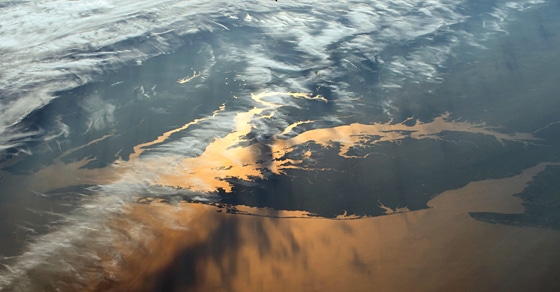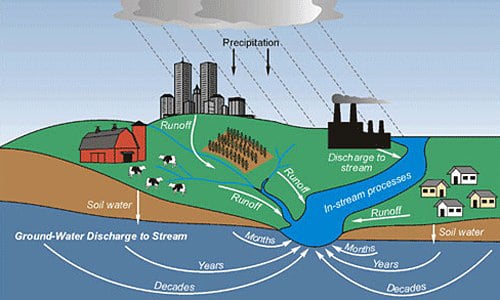
Aerial view of the Chesapeake Bay. Photo: Stuart Rankin (license: CC BY-NC 2.0)
People living in the six states served by the Chesapeake Bay watershed have a good reason to celebrate this month.
A federal appeals court, on July 6, approved the Environmental Protection Agency’s plan to limit pollution in the Chesapeake Bay. The Third Circuit Court of Appeals’ opinion upheld restrictions on farm and construction runoff and wastewater treatment.
The court opinion correctly points out that the Chesapeake Bay has been substantially degraded by nutrient and sediment pollution. According to Environmental Protection Agency data, the single largest source of this pollution is regional farms, which is consistent with the vast agricultural production in the watershed. This causes “dead zones” — oxygen-free areas — and algal blooms that can be toxic to both wildlife and humans.
BUILDING SOLUTIONS FOR PROFITABLE BUSINESSES AND HEALTHY STREAMS
This is why Stroud™ Water Research Center established a watershed restoration department. We work with farmers throughout the region to build solutions and find the necessary resources.
We firmly believe that it is possible to manage a profitable, productive business while protecting our streams and water quality. We work with farmers and landowners to secure the best technical assistance and advice, then follow up to find the programs and funding options that best fit their needs to plant and maintain forest buffers and implement other best management practices.
BLUEPRINT FOR A CLEANER BAY

Pollution from farms, cities and suburbs can seep into underground aquifers, contaminating groundwater that will eventually reach the Chesapeake Bay. Image: Scott Phillips/U.S. Geological Survey
After many previous attempts to clean up the bay failed, the Chesapeake Bay Clean Water Blueprint was created with the support of Delaware, Maryland, New York, Pennsylvania, Virginia, West Virginia and the District of Columbia.
The plan establishes a Total Maximum Daily Load (TMDL) for how much nitrogen, phosphorus and sediment can enter the bay each year before water quality standards are violated. The Federal Water Pollution Control Act, commonly known as the Clean Water Act, requires that we cut these pollution sources by 20-25 percent by 2025.
But the plan had strong opposition. The American Farm Bureau Federation sued the EPA in 2011, arguing that the plan “eliminates state flexibility to make their own cleanup decisions, or to modify their plans based on new technologies or new information.” Several other agriculture groups, as well as the National Association of Home Builders, also opposed the EPA’s plan.
However, the three-judge panel found their arguments “unpersuasive” and affirmed that the EPA’s regulation of nutrient pollution in the Chesapeake Bay under the Clean Water Act is valid.
“Congress made a judgement in the Clean Water Act that the states and the EPA could, working together, best allocate the benefits and burdens of lowering pollution,” the ruling states.
ENVIRONMENTAL AND ECONOMIC BENEFITS FROM CLEANUP
A peer-reviewed report, published last October by the Chesapeake Bay Foundation, found that, on top of the environmental benefits of the TMDL, the cleanup plan would also result in billions of dollars in economic benefits for the region.
Efforts to clean up the Chesapeake Bay will improve the water quality, habitat and fisheries of our local streams and rivers. It will also enhance bay area property values, increase agricultural and seafood production and attract more tourists.
We know that successfully meeting these goals will require significant resources and effort, but the outcomes will be worth it for generations to come.
Read More
- Opinion of the United States Court of Appeals for the Third Circuit
- Agriculture is the the single largest source of nutrient and sediment pollution, Chesapeake Bay Program
- Harmful algal blooms in the Chesapeake Bay are becoming more frequent, Science Daily
- The ABCs of HABs: How Harmful Algal Blooms Impact the Bay, Chesapeake Bay Program
- EPA unveils massive restoration plan for Chesapeake Bay, The Washington Post
- Farm Bureau takes aim at EPA limits on pollutant runoff into Chesapeake Bay, The Washington Post



